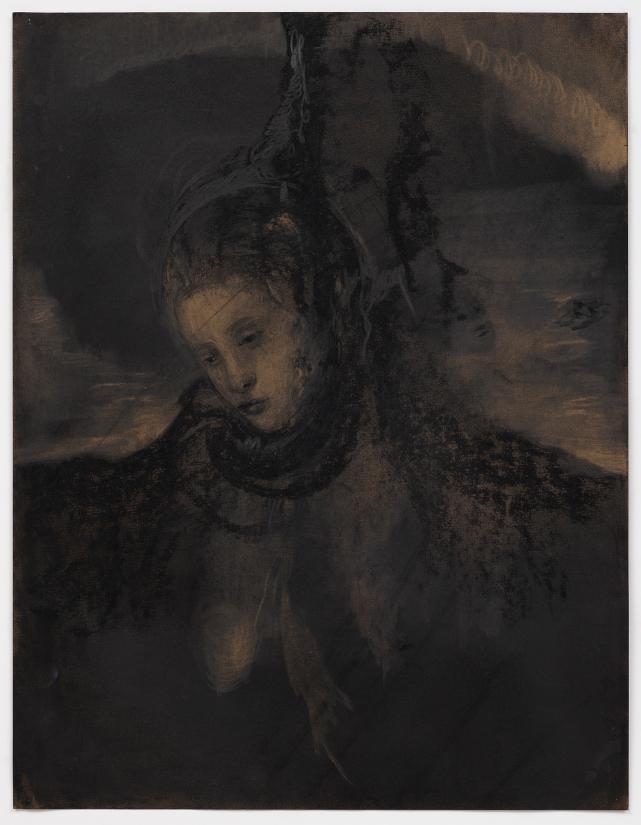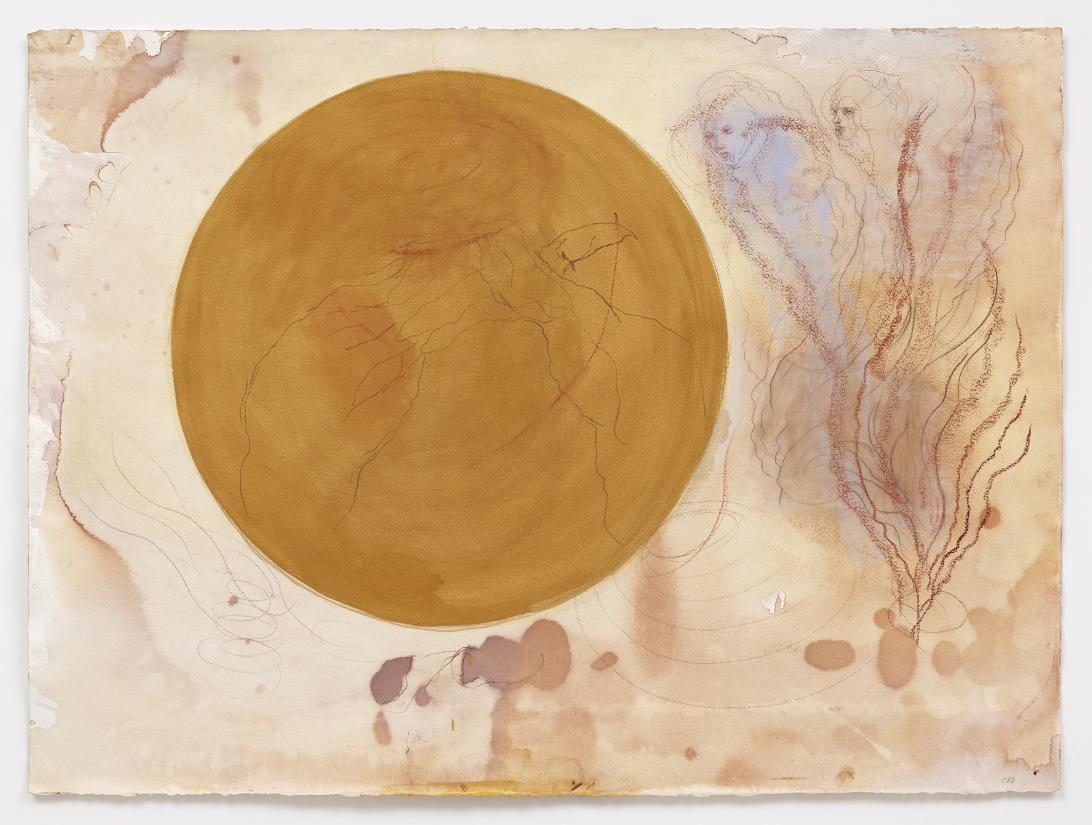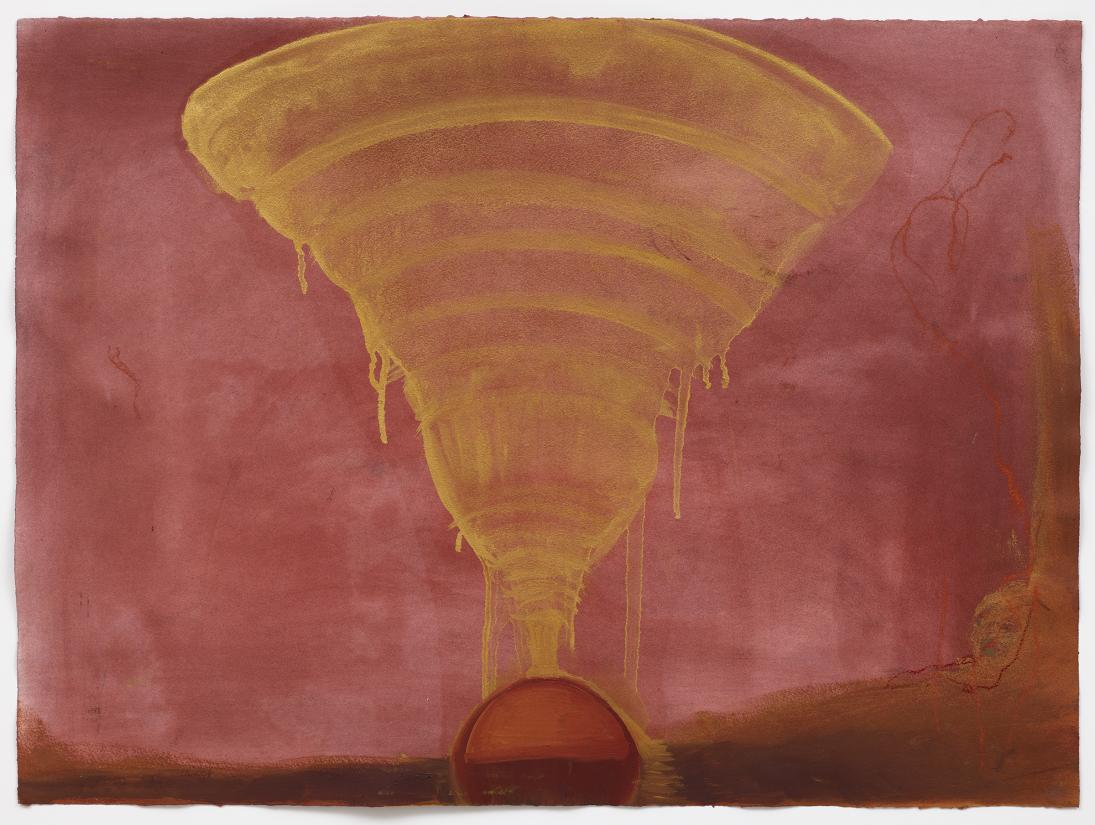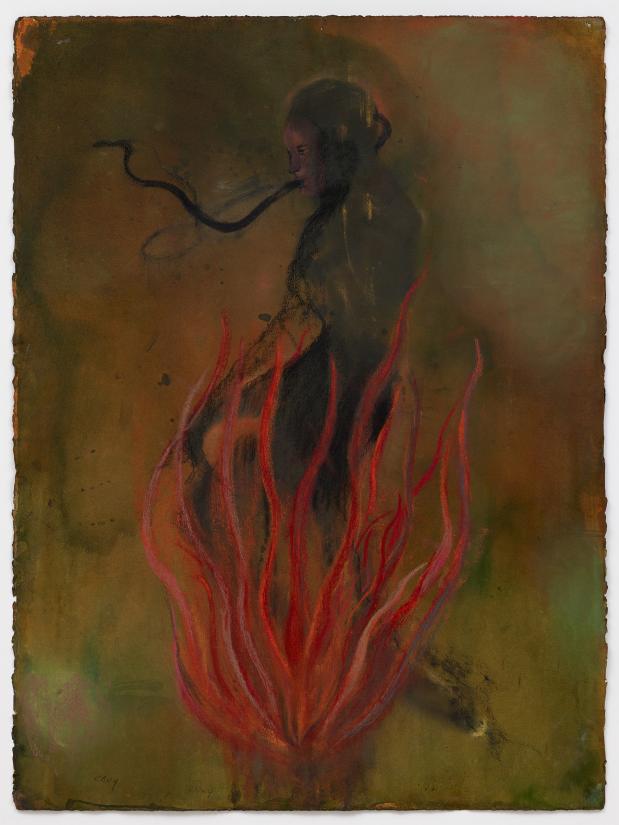Each in their way, the six new acquisitions reflect human ethics and ways of relating to the world. These reflections are based on the worldviews and existential philosophies of different historical times and are executed in a powerful and consistent expression.
Cathrine Raben Davidsen’s inspired interpretations from the 2023 exhibition Cathrine Raben Davidsen – Hybrid have now been added to the permanent collection of the Museum of Religious Art.
Hermeticism
As above, so below is a large charcoal drawing of an imagined lake landscape under a dramatic sky. The title is a well-known tenet of Hermetic writings and posits a close link between the sacred and the mundane. Aesthetically, this is expressed in the contrast between light and dark in the placid lake and the ominous clouds. Landscapes, a popular topic in art history, are rare in Cathrine Raben Davidsen’s work.
The Ten Commandments
You Shall Not Kill and Envy are the titles of two pieces illustrating two of the Ten Commandments that God handed down to Moses and the Jewish people on Mount Sinai, according to the Old Testament. Raben Davidsen portrays the two commandments in powerful visual representations.
You Shall Not Kill is a dark charcoal drawing. A sombre feminine face emerges from the deep-black tones of the drawing. As she looks straight ahead with a sorrowful gaze, she hangs her head while the texture of the drawing is coiled like a noose around her neck. Whether she is a victim, a sinner or bereaved remains unclear.
Envy is the tenth commandment: you shall not covet your neighbour’s wife or anything that belongs to your neighbour. In ink, oil, pastel and charcoal, Cathrine Raben Davidsen evokes the feeling of envy on the cotton paper. A female figure is surrounded by the burning red and orange flames of desire, her long hair flowing in the wind.
Divine Comedy
The third series among the new acquisitions refers to Dante Alighieri’s (1265–1321) Divine Comedy. The titles Inferno (after Dante), Virgil and Beatrice Looking into Paradise (after Dante) and Into the Abyss (after Dante) refer to different passages in Divine Comedy, which describes the author’s journey through the three realms of the afterlife: Hell, Purgatory and Paradise. With this suite, Raben Davidsen joins the many artists who have interpreted the late medieval text, including the Renaissance painter Sandro Botticelli (1445–1510).
About Cathrine Raben Davidsen
Cathrine Raben Davidsen was born and raised in Copenhagen. She studied at Instituto Lorenzo de’´ Medici in Florence, and Vrjije Akademie in the Hague and holds and MA from the Royal Danish Academy of Fine Arts in Copenhagen. She works in a range of different media, including paintings, drawings, prints and ceramics, and has created stage designs for the Royal Danish Theatre. In 2015, she was appointed Knight of the Order of Dannebrog by HM Queen Margrethe II.
About the Museum of Religious Art
The Museum of Religious Art collects, preserves, exhibits and presents works of art and objects with religious or spiritual significance. The museum building is located in Lemvig overlooking the Limfjorden sound. The museum’s purpose is to show the manifestation of religious art in 20th-century and contemporary art. The museum’s collection includes works by Marc Chagall and Edvard Munch, among others, as well as contemporary artists, such as Alexander Tovborg and John Kørner.








